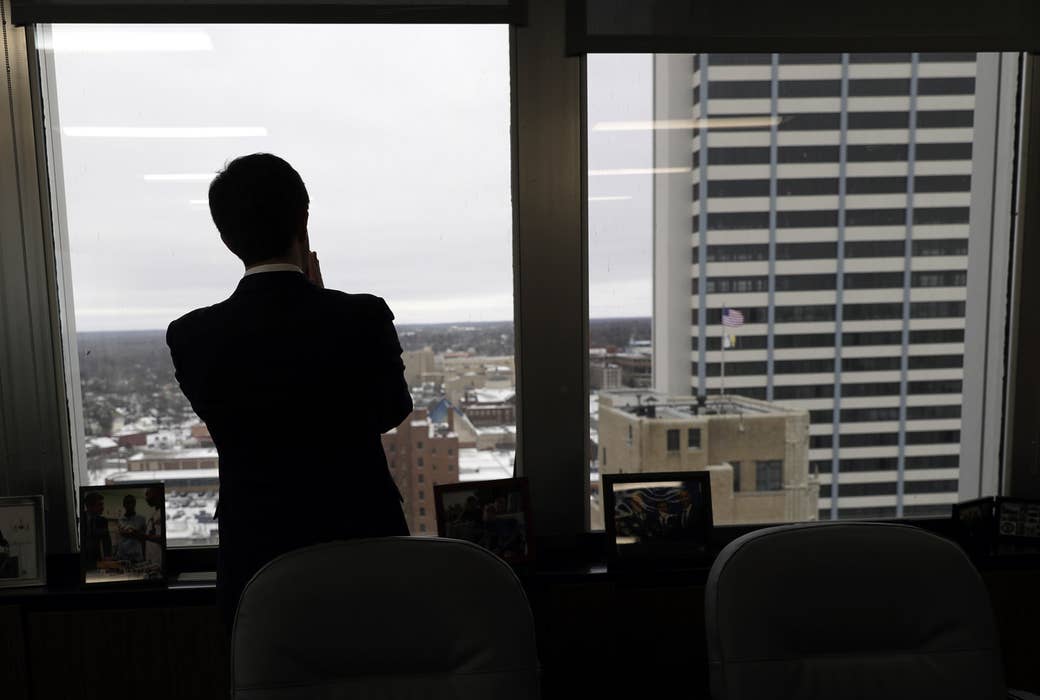
SOUTH BEND, Indiana — Regina Williams-Preston got into politics so that the city wouldn’t do to anyone else what the mayor’s big redevelopment plan did to her.
His program to knock down hundreds of homes in black and Latino neighborhoods like hers smacked of gentrification and ultimately cost her family several investment properties they hoped to repair but couldn’t after Williams-Preston’s husband suffered a serious illness.
Williams-Preston turned her anger into a successful run for city council. She pushed for more resources and fewer fines for those eager but struggling to renovate vacant homes. She demanded a deeper understanding of how big redevelopment plans can wipe out the fragile capital accumulations in communities of color. And now she is running for mayor, a job that’s opening up because the man behind the aggressive demolition program wants to be president.
Pete Buttigieg, the improbable, suddenly upper-tier Democratic contender, treats the initiative as an unfailing example of his executive leadership and one that shows why the mayor of South Bend, Indiana (population 102,000), deserves a promotion to the White House. Buttigieg gave himself a nice, round-numbered goal and an urgent deadline: 1,000 vacant and abandoned houses bulldozed or repaired within 1,000 days. Then he finished ahead of schedule.
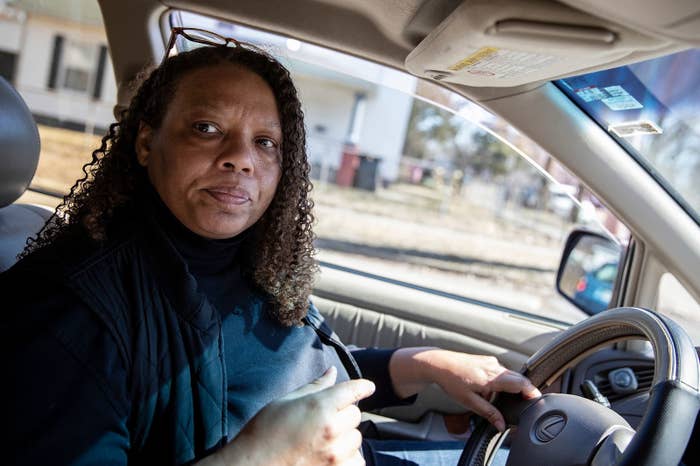
“In some ways, it was a classic example of data-driven management paying off,” Buttigieg writes in his recent political memoir. “But the most important impact of the effort was unquantifiable. Hitting such an ambitious goal made it easier for residents to believe we could do very difficult things as a city, at a time when civic confidence had been in short supply for decades.”
But the story of what happened in between — of an ambitious white leader literally plowing ahead before addressing concerns in the community of color — is not the story Buttigieg, 37, tells. You won’t read about that part in his book. You likely won’t hear about it when Buttigieg, who would be the youngest and first openly gay president, preaches “intergenerational justice,” or Sunday, when he's expected to officially launch his campaign from the city's revitalized downtown.
The fallout from his approach to urban redevelopment has relevance in a primary where candidates promote economic and racial equality. The “1,000 Houses in 1,000 Days” program promoted neither, at least not at first, in the minds of critics who spoke to BuzzFeed News.
“He is using that as a flagship,” Williams-Preston said last week in an interview at her campaign headquarters, a house on the city’s northwest side where she works from behind a folding table in a sparsely furnished living room. “That’s cool, but you can’t do it like we did it.”
Buttigieg has acknowledged some missteps and, to the appreciation of Williams-Preston and others, made changes to make repairing houses an easier and more affordable option.
“I’m not sure we got that completely right,” Buttigieg told the Christian Science Monitor last week, specifically with regard to aggressive code enforcement.
The mayor did not respond directly to questions from BuzzFeed News. His campaign manager, Mike Schmuhl, said in a telephone interview that a recent internal poll by Buttigieg’s mayoral committee found that 86% of respondents believed South Bend was on the right track. Schmuhl also noted that Buttigieg won his second term with more than 75% of the vote in both the Democratic primary and general election.
No one says that Buttigieg was guided by racial or sinister motives. (The mayor recently found himself explaining his 2015 declaration that “all lives matter” — a phrase that’s been used as a retort to the Black Lives Matter social justice movement.) But they also don’t buy his simplistic narrative, the story in which he’s the hero of a model program that could save cities like South Bend.
“Everyone wants to find a villain,” Williams-Preston said. “This is just how economic development happens. And I’m just constantly telling the administration: If we do what we’ve always done, we’ll get what we’ve always gotten. And what we have always gotten in cities all across the country is displacement of poor people and people of color.”
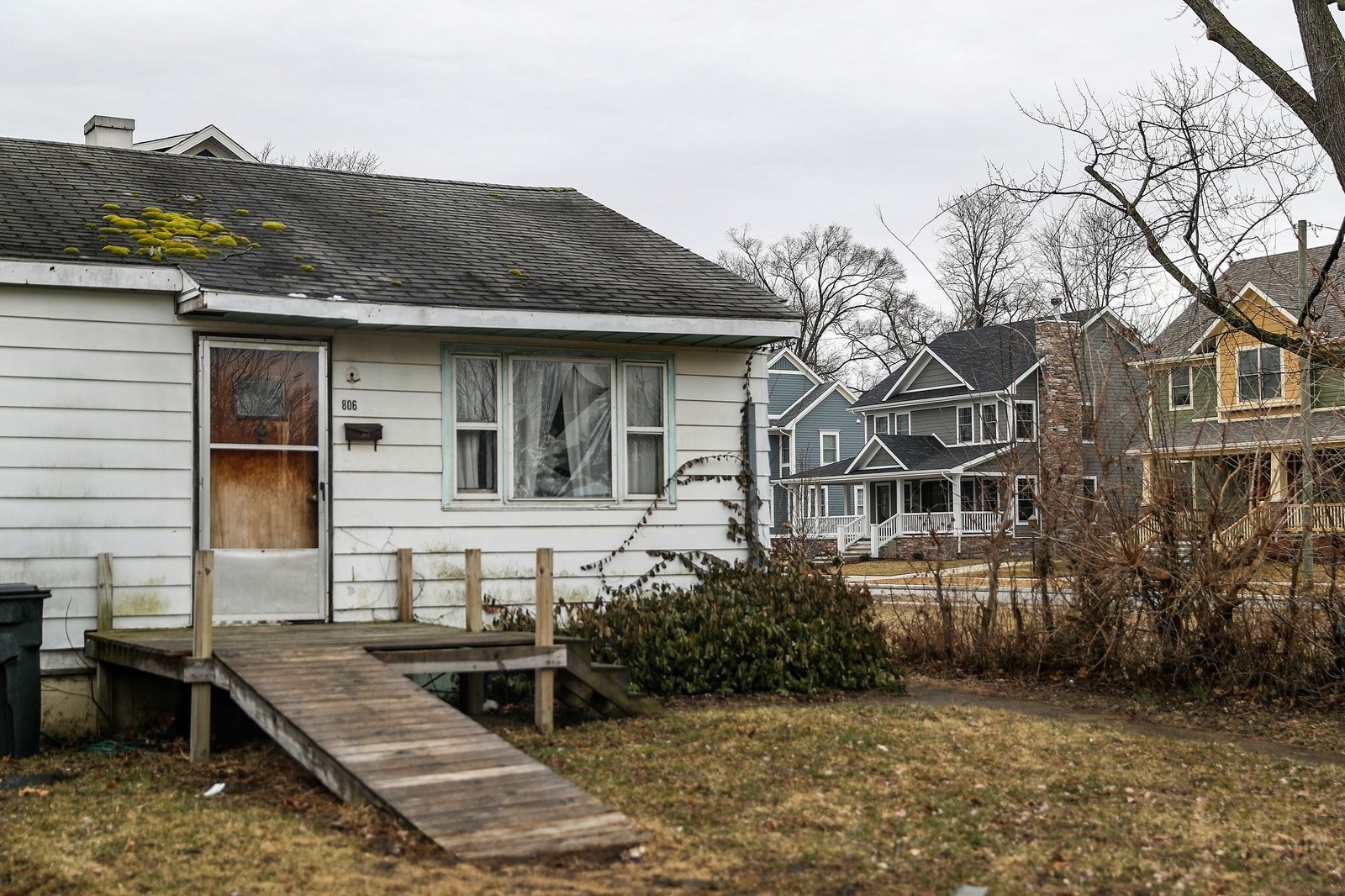
Black and Latino people account for more than 40% of South Bend’s population, according to the most recent Census estimates. A quarter of the city’s residents live in poverty. And when Buttigieg appeared this week on Meet the Press, host Chuck Todd briefly pressed him on the city’s 6.7% tenant eviction rate, “which,” Todd noted, “is fairly high.”
The problem of vacant and abandoned houses, though, is not unique to South Bend. Other industrial Midwest cities have seen their housing stock battered by the loss of manufacturing jobs, subprime lending, and foreclosures. Locals talk in awe and anger of Studebaker, which made its last car here more than 50 years ago and left an empty factory and office tower that only now is being rehabbed into a mixed-use complex.
Houses left untended, whether by a local owner who has been unable to keep up with repairs or a faraway investor who has lost interest, quickly turn into public nuisances, especially in neighborhoods already suffering from economic setbacks. The properties provide opportunities for copper thieves, cover for drug users, and unsafe shelter for homeless people. Demolitions often are a city’s strongest tool, especially when housing code enforcement fails.
Today it’s hard to drive down a street on South Bend’s northwest or west sides without seeing at least one empty lot where a house once stood. Some streets resemble jack-o-lanterns with wide berths of missing teeth. Tim Scott, president of the Common Council, the city’s legislative body, prefers a business-friendly term.
“What we’re doing is rightsizing,” he said last week as his Ford SUV rumbled over old brick roads and past grassy patches clear of everything but litter.
The mayor’s data-driven approach, which he nurtured in his twenties as a consultant for the global management firm McKinsey & Co., has impressed the council president. “There’s a lot of concern sometimes to try new things,” Scott said. “Pete was really good about trying new things. He always has data.”
To others, the Buttigieg way is often too rigid, and devoid of the human touch.
“If you’re going to argue with him, you better have some good data,” said one critic, who requested anonymity for fear of political retaliation in a city where Buttigieg easily won reelection in 2015. “But he’ll still tell you he has better data.”
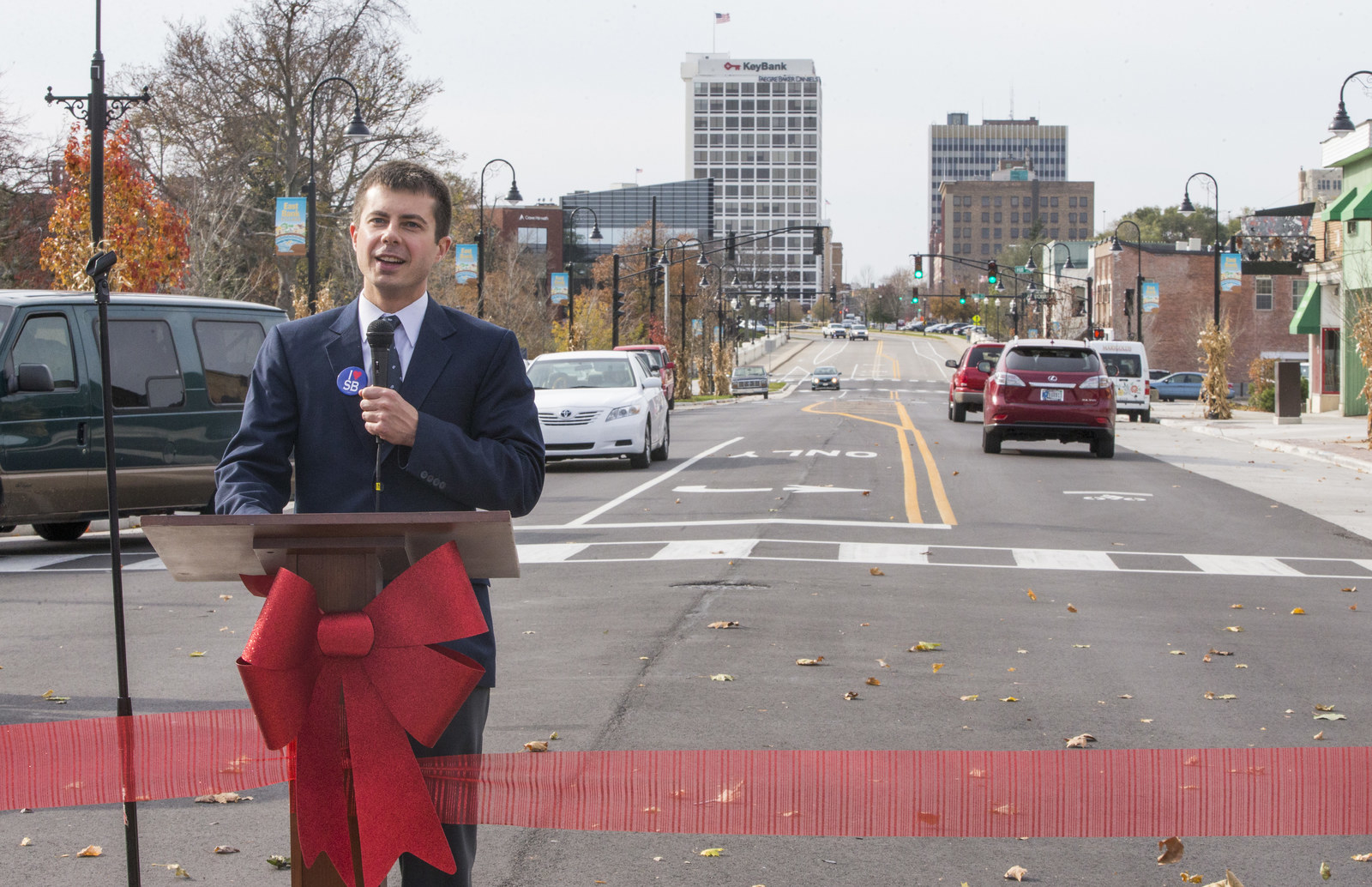
Buttigieg has focused considerable development energy downtown. He eliminated one-way streets to slow down traffic coming and going, a move designed to keep people downtown after work. As he looked to improve the neighborhoods, some in the community of color saw a mayor who wanted to increase value without thinking about how that could affect low-income residents — in a word, gentrification.
“What he believes is that South Bend was created when he showed up,” the critic said. “It’s not like you’re putting on your Superman cape and blue suit. People were here before you were.”
Buttigieg is eyed as an interloper in these circles, despite being born and raised in South Bend, the son of Notre Dame professors. His point of view is informed by a Harvard education, a Rhodes scholarship, a stint at McKinsey in Chicago, and, while he was mayor, a deployment to Afghanistan as a Navy reserve lieutenant.
In his book, Buttigieg recalls the “contagion of blight” — a phrase that invokes the vast, destructive urban renewal programs of the middle of the 20th century. In South Bend, it was associated with vacant and abandoned houses, the top issue raised by voters during his 2011 mayoral campaign. To study the problem, he convened a task force, which he cochaired with James Kelly, an expert in community development law at Notre Dame. Before releasing the task force’s report publicly in February 2013, Buttigieg had decided to respond to the problem with the 1,000 Houses in 1,000 Days initiative, which was not among the report’s recommendations.
“Without a different level of motivation, our administration and community might never get ahead of the issue, no matter how well we had asserted it,” Buttigieg writes in his book. “Worse, knowing the many nuances of the issue could actually make it harder; anyone who has sat on a big committee with lots of experts knows the feeling when people around the table display their expertise by mentioning one complication after another, admiring the dimensions of the problem in an ever deepening discussion that cries out for some modicum of simplicity so that there can be action.”
From the start, the 1,000 houses mark was to be met through a combination of demolitions and repairs. But there were suspicions early on, especially among people of color, that the city would use code enforcement powers to apply fines and civil penalties as a form of pressure to chase away even well-meaning property owners.
The Common Council quickly pushed back on the plan, passing a bill that demanded more transparency when houses were slated for demolition instead of repairs. In a statement at the time, Buttigieg complained that the council vote would “add layers of bureaucracy and expense to this effort.”
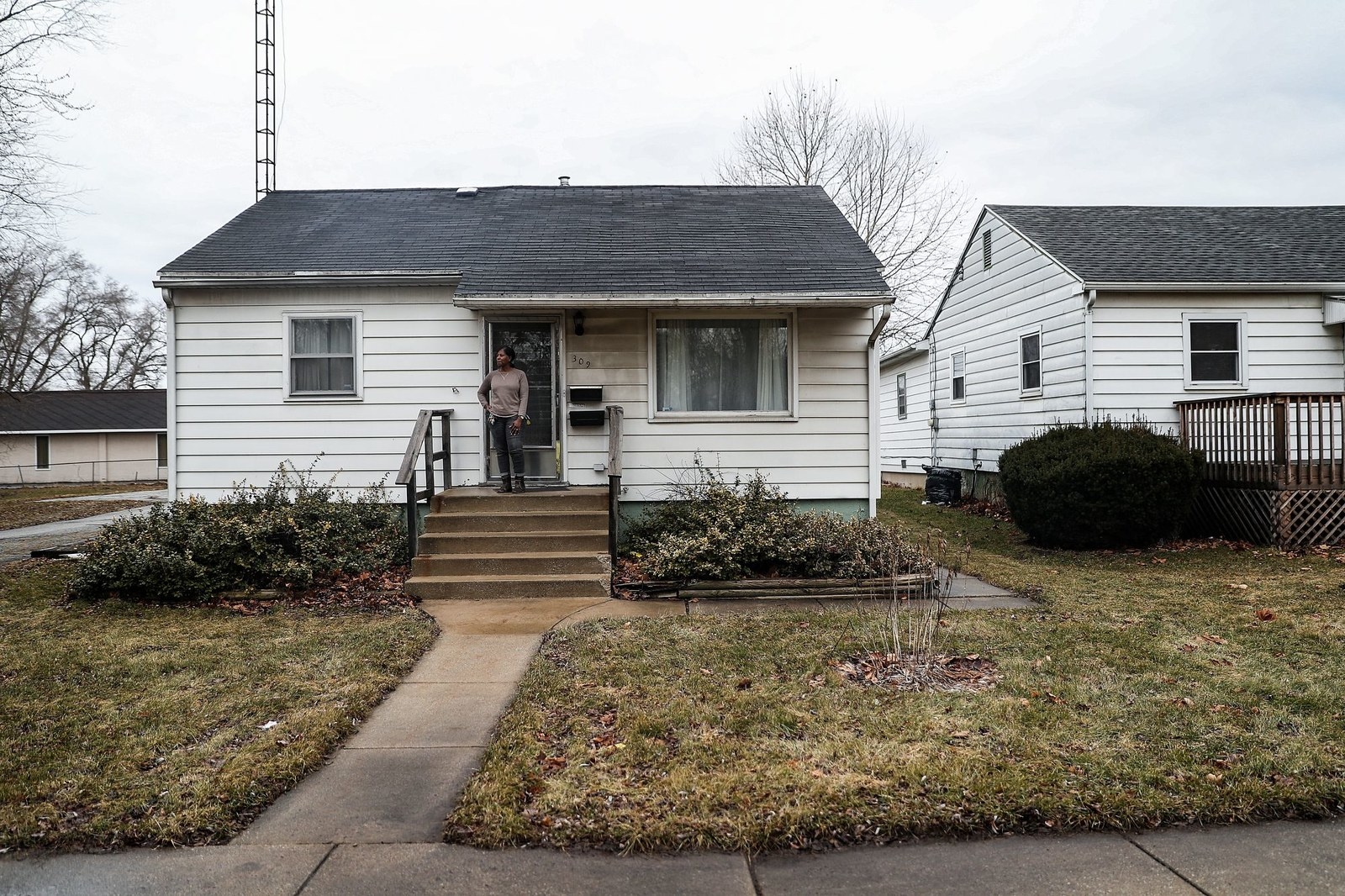
Stacey Odom is quite familiar with layers of bureaucracy. Several years ago, while outside working on a house she had recently bought to fix up as her own, a man pulled up to ask what she was doing.
“I was so proud,” Odom recalled. “So I tell this guy, ‘I’m just working on my house.’ He said, ‘Well, this house is on the demo list.’ … The demo list? What’s the demo list?”
Odom didn’t know this when she bought it, but the city had slated the house for demolition.
As she sat last week in another area home she acquired — this one to be the headquarters for a community development nonprofit she launched to help others navigate the red tape and manual labor of tricky housing rehabs — Odom shared a string of horror stories about what happened next.
She worked out an extension with the city, only to be put back on the demo list because she didn’t know she had to schedule a code inspector to come check her progress. A city employee laughed at her when she realized her mistake. “I felt like I was at a comedy show. And I looked at him, just trembling.”
When she needed permits for other repairs, Odom was at the mercy of an unsympathetic city employee. So she would wait outside discreetly, until she spied the woman leaving for a break and could try her luck with someone else.
This is the human element that Buttigieg’s critics say he initially missed with 1,000 Houses in 1,000 Days. There were people in the neighborhoods who wanted to rehab vacant properties, either for themselves or as investments, and to keep money in the community. But they found a system working against them, from the city bureaucracy to costly fines and penalties.
More broadly, they saw a mayor who wanted what they wanted — revitalized neighborhoods — but who didn’t listen to their concerns about displacement. And there were suspicions that homes were targeted because they stood in the way of other city-endorsed residential development plans that would price out longtime area homeowners and renters.
“I mean, if someone is always coming to improve — what they think is an improvement for you, but what is actually gentrification — and you have to move somewhere else, you’re going with nothing,” Odom said. “Where is your home? It’s going to be nowhere.”
Despite the increased oversight demanded by the Common Council, activists recall overly aggressive code inspectors leaning heavily on locals like Odom, whose intentions were nobler than many of the out-of-state investors who held neglected properties in the area. City leaders, activists argue, went against a task force recommendation by ticketing too many neighborhood owners who couldn’t afford to make repairs (let alone pay fines).
“Because of the thousand houses in a thousand days, there’s this timeline crunch, so anytime you’re under the pressure of meeting a goal, we push forward with things and don’t think them through carefully,” said Williams-Preston, the council member and mayoral candidate. “So what was happening was people were given repair orders: OK, you got two months to fix up your house or we’re gonna tear it down. And it’s like, wait, I work full-time. I’m doing this work myself.”
All of her husband’s investment properties eventually were demolished, Williams-Preston said.
Notre Dame’s Kelly, who cochaired the task force, said stories like hers — where an owner was willing but not necessarily able to make repairs — are important to the conversation.
“This was the hard call,” Kelly said of houses that were demolished despite having an engaged owner. “I think the city did make those hard choices in a very principled way.”
One lingering point of contention over the demolition program is how many of the razed homes were owned by actual absentee landlords versus locals who had fallen on hard times.
“Part of the propaganda around this was, ‘Oh, my gosh, these are absentee landlords and they don’t care about their community. They don’t live here, and we’ve got to get these properties out of the hands of these irresponsible people,’” Williams-Preston said. “But what I think was missing — the gap in understanding how these communities work — is that a lot of these homes were owned by people who inherited them from their family who passed away, and/or they were living in the home and it got so bad and they couldn’t get any help for it, so they ended up having to move out.”
Williams-Preston and others in the black community believe property owners from South Bend and surrounding St. Joseph County represented most of the demolished homes. City officials dispute that, though they told BuzzFeed News no corroborating data exists.
“There might have been some of those instances, but my impression was that the majority of them were larger investors, and things like [limited liability corporations], kind of a shell game,” said Elizabeth Maradik, a city planner in South Bend’s department of community investment. “Maybe those were local people, but maybe it was a bit harder to track down because of the LLCs. But … I guess I’d say maybe the more sophisticated kind of investor person versus the neighbor who had it in their name and owned a handful of properties, and something happened.”
Kathy Schuth, executive director of Near Northwest Neighborhood Inc., a community development nonprofit that rehabs houses, also believes outside investors accounted for most of the demolished houses. “But I wouldn’t dare say that it didn’t impact families,” she said. “We’ve heard stories since that make me really sad.”
In the end, 1,000 Houses in 1,000 Days resulted in a roughly 60–40 split favoring demolitions over repairs. By the standards Buttigieg set, the plan was a success. Two months before his deadline, the mayor declared mission accomplished with a photo op that accentuated a feel-good story: a renovation job by a family that rescued a home off the demolition list.
“The approach we were taking was, ideally we wanted to repair as many properties as could be repaired,” Maradik said. “We were happy with the ratio.”
So was Kelly, who worried that rehabs would be difficult without more public money in areas already suffering long-term population decline.
“I really thought to myself that they would be looking at 80 to 85% demolitions,” Kelly said. “I was incredibly impressed with the fact that it was under two-thirds.”
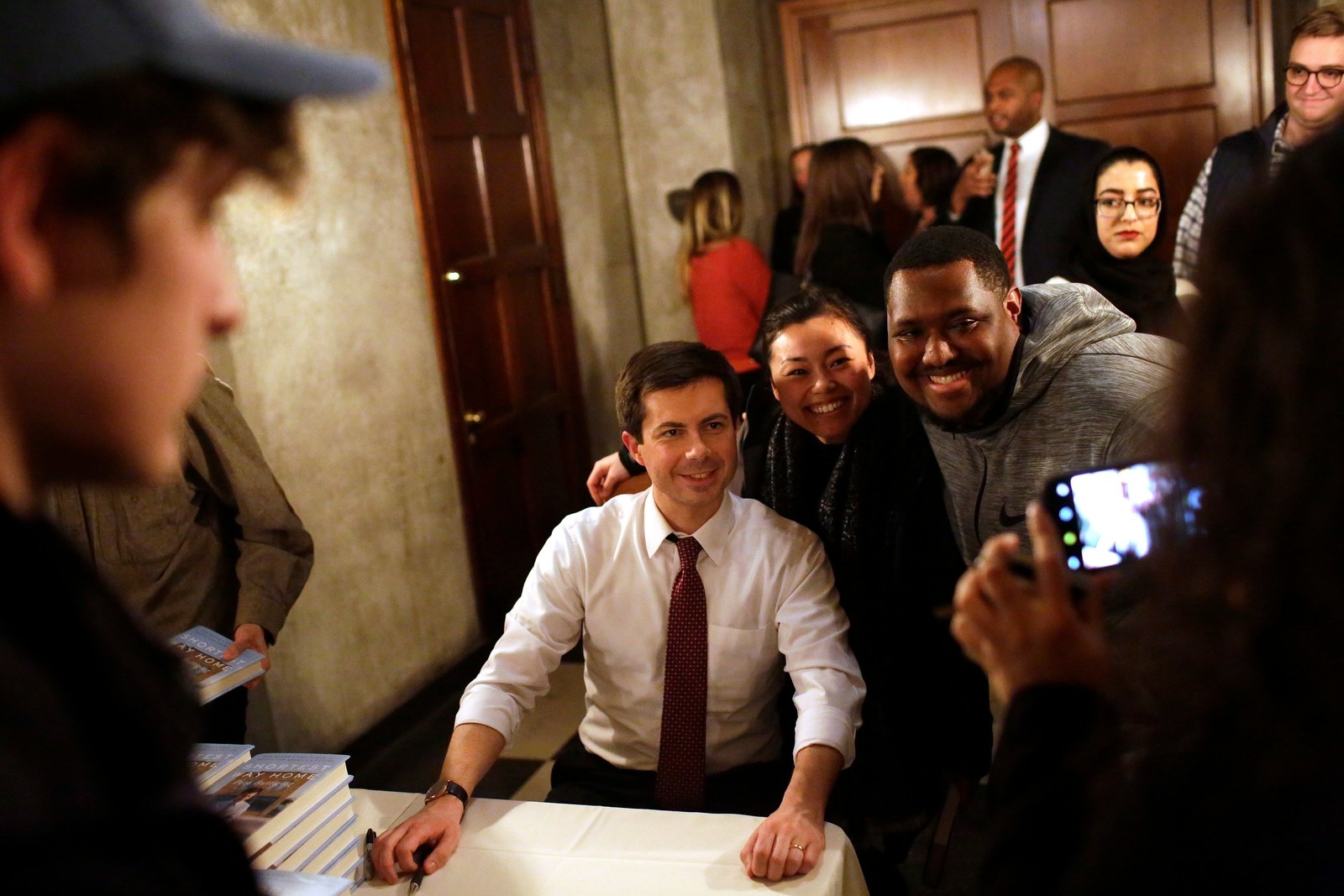
To the neighborhood activists, the better takeaway is that Buttigieg eventually started taking their concerns seriously.
Once on the council, Williams-Preston offered a “100 Houses for 500 Families” program that emphasized repairs to existing homes and construction of affordable new homes on the empty lots left behind by the demolitions.
Her program didn’t roll out exactly like she hoped, but Williams-Preston said the city committed funds to it. “So I would say he supported it,” she said of Buttigieg.
Those discussions led to conversations about the data-obsessed mayor’s plan to hire a New Jersey firm for a community survey. Williams-Preston said Buttigieg’s administration agreed to spend $25,000 to use local neighborhood organizers.
“We’re like, uh, no, that’s not how real life works,” Williams-Preston recalled. “We need to get our neighbors knocking on their neighbors’ doors and finding out what’s happening right on the ground, like a real assessment.”
Odom and Williams-Preston also praise Buttigieg for making more resources and money available for low-income residents to fix up homes. In January, Buttigieg launched South Bend Repair, an initiative composed of three programs and more than $1 million in investment at the city and federal level, according to the South Bend Tribune. The effort is aimed at helping homeowners make renovations small and large. One of programs, Love Your Block, includes a $25,000 grant from the national Cities of Service nonprofit, matched by $25,000 from the city. Odom recently helped the city connect property owners with resources available from that fund. The mayor, she said, has shown an open door.
“I think he still has a ways to go,” Odom said. “But I do give Mayor Pete credit for having conversations. I’ve stopped him on the street many times. And he’ll stop and he’ll talk: ‘Call me, whatever. I’ll look into it.’”
Odom’s nonprofit Odom Community Developers launched last month with a crew of five to seven laborers who help homeowners repair their properties and keep code inspectors at bay. The goal is to repair 60 homes and build 28 in the coming years. (“I have great faith in the Lord. I have this feeling that someone is going to write me a million-dollar check.”)
“There’s always someone who went to college and graduated and they have this idea of, ‘Oh, this could be so beautiful on this side of town,’” Odom said. “But they never think about the consequences. They don’t think about the people they’re hurting. And I think that the mayor, he didn’t have all of the people he needed in his ear giving him the guidance to do it the right way.”
Williams-Preston, who has developed a working relationship with Buttigieg, said the mayor has learned to call such guidance “healthy pressure.”
“You very well could be president of the United States one day,” she recalled telling Buttigieg. “And I feel like it’s the responsibility of the people of South Bend to make sure you’re prepared for that. So we are going to have to give you some battle scars.”
The way Williams-Preston sees it, there’s room for more than one hero in Buttigieg’s story.
“Some people, they’re trying to find the dirt on Pete,” she said. “I just try to encourage people. If you look at the whole story — any good story — the hero is an imperfect hero, you know what I’m saying? We don’t do everything right. The real story here is the fact that the people organized to make a change.” ●

